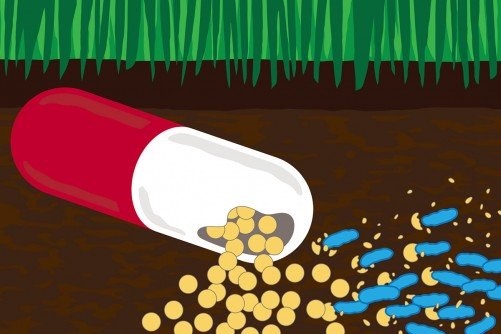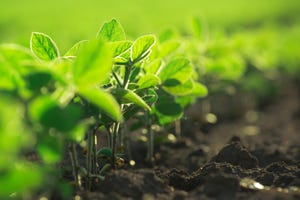Bacteria may be key to cleaning up antibiotic contamination
Understanding steps involved in converting an antibiotic into a food source could help researchers bioengineer bacteria to clean up contaminated soil and waterways.
May 1, 2018

Antibiotics can be lifesaving for people and animals suffering from serious bacterial infections. The drugs are lethal to bacteria, but some bacteria fight back by developing resistance to antibiotics, and a few not only resist the onslaught but turn the lethal drugs into food.
Researchers have understood little about how bacteria manage to consume antibiotics safely, but new research from the Washington University School of Medicine in St. Louis (Mo.) illustrates key steps in the process.
The findings, published April 30 in Nature Chemical Biology, could lead to new ways to eliminate antibiotics from land and water, the researchers said. Environmental antibiotic contamination promotes drug resistance and undermines the ability to treat bacterial infections.
“Ten years ago, we stumbled onto the fact that bacteria can eat antibiotics, and everyone was shocked by it,” said senior author Dr. Gautam Dantas, an associate professor of pathology and immunology, molecular microbiology and biomedical engineering. “Now, it’s beginning to make sense. It’s just carbon, and wherever there’s carbon, somebody will figure out how to eat it. Now that we understand how these bacteria do it, we can start thinking of ways to use this ability to get rid of antibiotics where they are causing harm.”
Drug resistance is a serious problem that some say threatens to set medical care back to a time when antibiotics were not yet discovered and infectious disease was the number-one cause of death worldwide.
Bacteria easily share genetic material, the researchers noted, so when antibiotics infiltrate the water and soil, resident bacteria respond by spreading antibiotic resistance genes through the community.
Dantas, postdoctoral researcher and first author Dr. Terence Crofts and their colleagues wanted to understand how some environmental bacteria not only withstand antibiotics but feed on them. They studied four distantly related species of soil bacteria that all flourish on a diet of penicillin alone.
Although penicillin was the first antibiotic discovered, it has fallen out of favor because of issues with resistance. Other members of the penicillin family such as amoxicillin and ampicillin are still effective and are widely prescribed to treat bacterial infections.
The researchers found three distinct sets of genes that became active while the bacteria ate penicillin but were inactive while the bacteria ate sugar. The three sets of genes correspond to three steps bacteria take to transform a lethal compound into a meal, they said.
All of the bacteria start by neutralizing the dangerous part of the antibiotic. Once the toxin is disarmed, they snip off a portion and eat it.
Understanding the steps involved in converting an antibiotic into food could help researchers bioengineer bacteria to clean up soil and waterways contaminated with drugs and, thereby, slow the spread of drug resistance. The soil bacteria that naturally eat antibiotics are finicky and difficult to work with, the researchers said, noting that a more tractable species like Escherichia coli potentially could be engineered to feed on antibiotics in polluted land or water.
Crofts and Dantas showed that they could give E. coli the ability to survive and thrive on penicillin. The bacterium normally requires sugar, but with some genetic modification and the addition of a key protein, it flourished on a sugar-free diet of penicillin.
“With some smart engineering, we may be able to modify bacteria to break down antibiotics in the environment,” Crofts said.
Any such bioengineering project would have to include a plan to speed up the antibiotic-eating process. The way soil bacteria naturally remove antibiotics from the environment is effective but slow, the researchers pointed out.
“You couldn’t just douse a field with these soil bacteria today and expect them to clean everything up,” Dantas said. “Now, we know how they do it. It is much easier to improve on something that you already have than to try to design a system from scratch.”
You May Also Like



